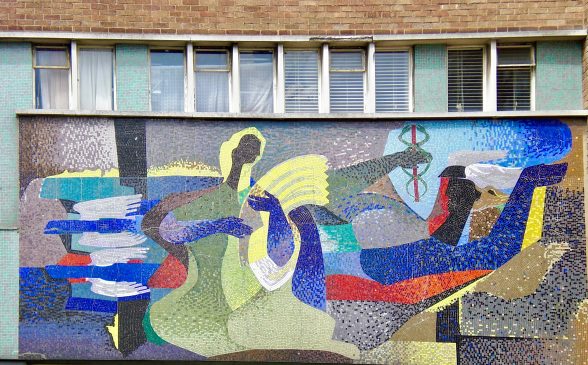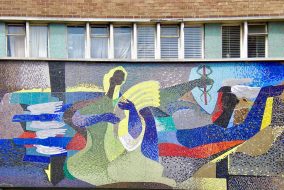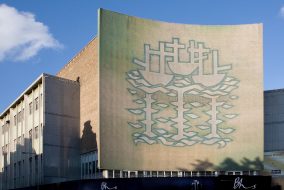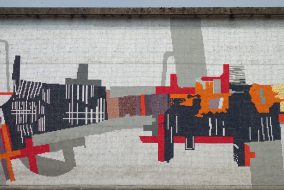This website uses cookies
This website uses cookies to enable it to function properly and to analyse how the website is used. Please click 'Close' to accept and continue using the website.



Image: Djinn76 / Flickr
A rare mural in Ipswich on the former Co-Operative department store has been Grade II listed, following support from C20 Society. The colourful mosaic tile mural was designed by Hungarian émigré artists Gyula Bajó and Endre Hevezi between 1963-64, it is one of only four such Co-op murals in the UK. The news represents another success for C20s long-running Murals Campaign, which has seen upwards of 30 murals nationally listed and others saved through relocation, since it launched in 2009.
The Society was involved in a pre-application consultation for a major development proposed for the site, which we objected to. We later submitted a letter of objection when the proposals came forward for planning application in 2021. The mural listing comes thanks to an application made by local campaigner Beren Reid to Historic England, and supported by C20. Permission was granted later in 2021 for demolition of 48-68 Carr Street; the listing designation only covers the mural, with the former department store building being deemed of insufficient architectural and historic interest.

Image: Lynn Pearson
Positioned over Cox Lane to the rear of the store, the 3 x 6m Ipswich mural is composed of thousands of square coloured mosaic tiles and is sometimes known as ‘Harvest’. It appears to depict the Greek mythological characters of Demeter, goddess of the harvest and agriculture, and the messenger Hermes, who was sent to the underworld to save Demeter’s daughter Persephone from Hades, so that the seasons could be restored and famine prevented on earth. The wheatsheaf is a popular emblem of the Co-operative Movement, as ‘a stalk of corn cannot stand alone, but many stand together’ (Pearson).
The provision of distinctive public art was a major initiative in the post-war period by major retailers such as the Co-operative Stores. The Co-operative movement is an important signifier of working-class culture during the late 19th and 20th centuries. With the movement’s general decline across the United Kingdom, monuments such as these have significant social and historic interest, and every attempt should be made for them to be appropriately conserved.
Calls for further Scunthorpe Co-op mural to be listed
The Ipswich Co-op mural is one of only four surviving large-scale English Co-op murals of the 1950s and 1960s. C20 has been closely involved in the listing of three of these in recent years – from the agrarian example in Stevenage new town, also by Bajó, to the colossal Three Ships mural in Hull, by Alan Boyson – and is now calling for the last unprotected example – Derek W Brown’s 1963 mural in Scunthorpe – to also be considered for listing.

Listed at Grade II in April 2023

Listed at Grade II in May 2022

Listed at Grade II in November 2019

Unlisted, featured as C20s Building of the Month in February 2020
Building of the Month Feb 2020 // Co-op Pharmacy, Scunthorpe

Become a C20 member today and help save our modern design heritage.